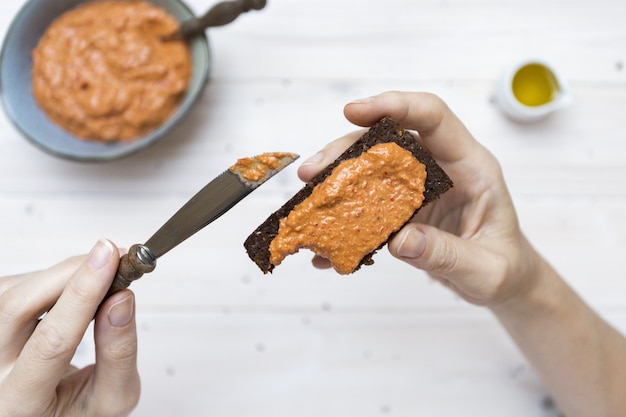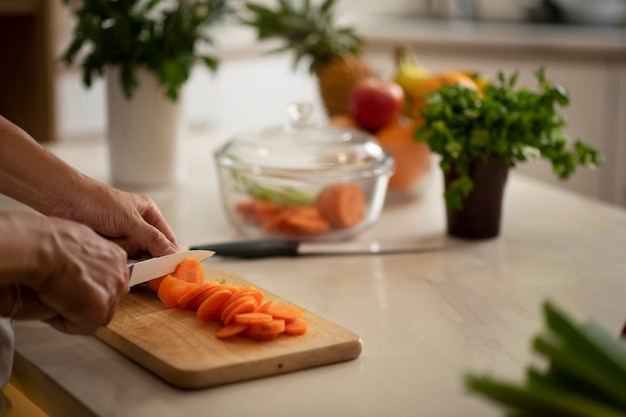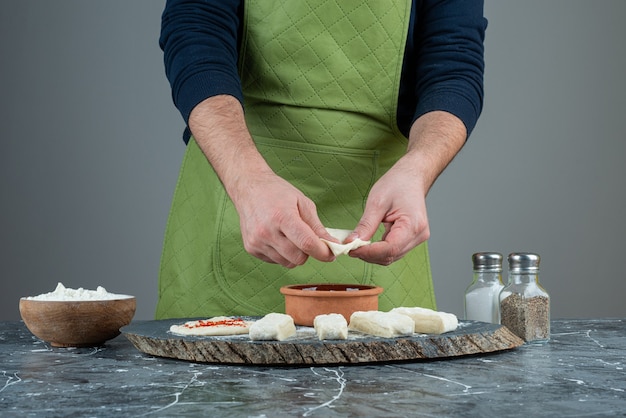For years, I, like many others, saw salmon skin as a culinary afterthought, a sort of protective layer to be peeled off before enjoying the delicious fish within. But, I'm here to tell you, I was wrong. Salmon skin is a culinary gem waiting to be discovered. It's crispy, flavourful, and adds a fantastic textural contrast to the delicate fish.
This guide is my attempt to convince you, dear reader, to embrace the wonderful world of salmon skin. It's more than just a protective barrier; it's a culinary adventure! We'll delve into the secrets of getting that perfect crisp, exploring the best cooking methods, and uncovering delicious ways to incorporate it into your dishes. So, buckle up, we're about to embark on a journey of crispy, golden goodness!
(Part 1) The Case for Salmon Skin

Why You Should Give It A Go
Let's be honest, the idea of eating salmon skin isn't exactly the most appealing thing for many folks. We've all been there, avoiding it like the plague, thinking "that's just going to be chewy and gross." But trust me, there's a whole new level of deliciousness waiting to be unlocked.
Think about it: you wouldn't just chuck away the crispy skin of a roast chicken, would you? It's the same with salmon – that crispy, caramelized skin is bursting with flavour, and adds a delightful crunch that elevates the entire dish. It's like a party in your mouth, and the salmon skin is the guest who brings the best snacks.
The Nutritional Benefits
Beyond just being delicious, salmon skin is actually a nutritional powerhouse. It's packed with omega-3 fatty acids, which are excellent for heart health and brain function. It's also a good source of vitamin D, which is essential for bone health and immunity. So, you're essentially getting a double dose of goodness when you eat the skin.
The Texture
Now, let's address the elephant in the room: texture. Some people are hesitant about salmon skin because they fear it will be chewy or rubbery. However, when cooked properly, salmon skin can be delightfully crispy, almost like a thin, savory cracker. It provides a welcome textural contrast to the delicate, flaky fish flesh.
(Part 2) Preparing the Salmon

The First Step: Patting It Dry
Before you even think about cooking that salmon skin, it's essential to pat it dry. This might sound like a simple step, but it's crucial. Moisture is the enemy of crispiness. A damp skin will steam instead of crisp up, resulting in a soggy mess that nobody wants.
So, grab some kitchen paper and pat that salmon skin dry until it feels completely dry to the touch. It might take a bit longer than you think, but trust me, the extra effort will pay off.
Scoring For Even Cooking
Once your salmon is dry, it's time to score it. This basically means making shallow cuts in the skin, which helps with even cooking and prevents the skin from curling up as it cooks. Just use a sharp knife and make diagonal cuts, about 1/4 inch apart, across the entire surface of the skin. It's a simple trick, but it makes a world of difference.
Brining – For Extra Tenderness (Optional)
Now, this step is optional, but it can really elevate your salmon skin game. Brining is the process of soaking the salmon in a salt water solution, which helps to tenderize the flesh and enhance the flavour.
To brine your salmon, simply mix a cup of salt with 4 cups of water and submerge the salmon in the solution for 30 minutes to an hour. This will add a delicate saltiness to the fish and create a more tender, juicy texture.
(Part 3) Cooking Methods

The Great Pan-Fried Debate
Pan-frying is my go-to method for salmon skin, and for good reason. It's super simple and produces consistently crispy results. Just heat a tablespoon of oil in a pan over medium-high heat, then carefully place the salmon skin-side down in the pan.
The key here is patience. Let the skin cook undisturbed for about 3-4 minutes, or until it's golden brown and crispy. Resist the urge to flip it too early, because you'll just end up with a soggy mess. Once the skin is crispy, flip it over and cook for another minute or two to cook the flesh.
Oven-Roasted: A Crisp Alternative
If you're after a hands-off approach, then oven-roasting is a great option. Preheat your oven to 400°F (200°C) and place a piece of parchment paper on a baking sheet. Lay the salmon skin-side down on the parchment paper and roast for 10-12 minutes, or until the skin is golden brown and crispy.
Keep an eye on it, though, because ovens can vary. You don't want to overcook the skin and end up with a burnt mess.
Grilling: For That Smoky Flavor
If you're feeling adventurous, grilling is a great way to add a smoky flavour to your salmon skin. Preheat your grill to medium-high heat and make sure it's clean. Place the salmon skin-side down on the grill and cook for 3-4 minutes, or until it's golden brown and crispy.
Flip it over and cook for another minute or two to finish cooking the flesh.
Sous Vide: Achieving Perfection
For those of you who are serious about your salmon skin, sous vide cooking is the ultimate way to achieve perfectly cooked fish with an incredibly crispy skin. This method involves sealing the salmon in a vacuum bag and immersing it in a water bath set to a precise temperature.
This ensures that the fish cooks evenly, while also allowing the skin to become incredibly crispy. After the salmon is cooked in the water bath, it's then briefly seared in a pan to achieve that final golden brown colour and extra crispy texture.
(Part 4) Serving Up Perfection
A Culinary Canvas
Once your salmon skin is cooked to perfection, it's time to get creative with how you serve it. The beauty of salmon skin is that it's so versatile, it can be enjoyed in countless ways.
You can serve it as a simple appetizer, simply seasoned with salt and pepper, or you can get fancy and add toppings like avocado, mango, or a sprinkle of chilli flakes. The sky is the limit!
Ideas For Serving
- On a bed of salad: A crispy salmon skin topping a bed of fresh greens, with a light dressing, is a simple yet delicious way to showcase its flavour. The crunchy texture contrasts beautifully with the soft leaves and fresh ingredients.
- With rice or noodles: Add a touch of crunch to your favourite rice or noodle dish with a topping of crispy salmon skin. It adds a savoury element and a textural contrast to the soft rice or noodles.
- As a taco filling: Create a fun and flavourful taco by filling a tortilla with crispy salmon skin, a dollop of sour cream, and your favourite toppings. The crispy skin adds a unique twist to traditional taco fillings.
- In a bowl with your favourite veggies: This is a great way to enjoy salmon skin in a satisfying and healthy meal. The combination of crispy skin and fresh vegetables creates a balanced and flavorful dish.
Don’t Forget the Leftovers!
Speaking of leftovers, don't even think about throwing them away! You can easily store cooked salmon skin in the refrigerator for up to 3 days. It's a great addition to salads, sandwiches, or even as a topping for soups and stews.
(Part 5) Mastering the Art of the Crisp
The Secret to Crispy Skin
We've already touched on a few key factors for achieving that perfect crisp, but let's delve deeper. Here are some extra tips to ensure your salmon skin turns out crispy and golden:
- Heat is key: Cook your salmon over high heat. This ensures that the skin crisps up quickly without becoming soggy.
- Don't overcrowd the pan: Make sure you have enough space in your pan for the salmon to cook evenly. If the pan is too crowded, the salmon will steam instead of crisp up.
- Use a good quality oil: I recommend using a high-heat oil like avocado oil or grapeseed oil, which has a high smoke point and won't burn at high temperatures.
- Resist the urge to flip too early: Let the skin cook undisturbed for at least 3-4 minutes, or until it's golden brown and crispy. Patience, my friend!
The Ultimate Test for Crispness
Here’s a simple test to check if your salmon skin is crispy enough: Gently press it with a spatula. If it springs back, then it’s ready to go. If it bends easily, then it needs a few more minutes on the heat.
(Part 6) The Challenges of Salmon Skin
The Fear of the Fishy Smell
One of the biggest concerns when cooking salmon skin is the potential for it to smell fishy. It's true, the skin can sometimes release a strong fishy aroma, especially if it isn't handled properly. However, there are ways to minimize this issue:
- Pat it dry: As mentioned earlier, patting the skin dry before cooking will help to reduce the fishy odour.
- Use fresh salmon: Always opt for fresh salmon, as it will have a milder flavour and aroma.
- Cook it quickly: Overcooking the skin can intensify the fishy smell. So, cook it quickly over high heat to ensure it crisps up without becoming overly fishy.
The Issue of Texture
Another common concern is the texture of the skin. Some people find it to be too chewy or rubbery. However, with the right cooking method and a little bit of preparation, you can achieve a crispy, satisfying texture.
The key is to cook it over high heat and let it crisp up. Don't overcrowd the pan, and resist the urge to flip it too early. If you're still finding it too chewy, try scoring the skin before cooking. This will help it to cook more evenly and prevent it from becoming rubbery.
(Part 7) Salmon Skin Recipes
Simple Salmon Skin Appetizer
- Pat dry the salmon skin.
- Score the skin with a sharp knife.
- Heat a tablespoon of oil in a pan over medium-high heat.
- Place the salmon skin-side down in the pan and cook for 3-4 minutes, or until crispy.
- Flip it over and cook for another minute or two to cook the flesh.
- Season with salt and pepper to taste.
- Serve immediately with a squeeze of lemon juice.
Salmon Skin Tacos
- Prepare the salmon skin according to your preferred method.
- Warm tortillas in a pan or microwave.
- Fill the tortillas with crispy salmon skin, a dollop of sour cream, chopped avocado, diced red onion, and cilantro.
- Season with your favourite taco seasoning.
- Serve immediately and enjoy!
Salmon Skin Salad
- Prepare the salmon skin according to your preferred method.
- Combine a mix of your favourite salad greens in a bowl.
- Crumble the cooked salmon skin over the salad.
- Add a light dressing of your choice.
- Top with sliced avocado, cherry tomatoes, and a sprinkle of toasted nuts for extra texture and flavour.
- Enjoy!
Crispy Salmon Skin with Mango Salsa
- Prepare the salmon skin according to your preferred method.
- While the salmon is cooking, make the mango salsa. Dice a ripe mango, red onion, and jalapeno pepper into small pieces. Combine in a bowl and toss with lime juice, chopped cilantro, and salt to taste.
- Once the salmon skin is cooked, serve it on a plate with a side of the mango salsa.
- Enjoy the contrasting textures and flavours of the crispy salmon skin and the fresh, zesty mango salsa.
(Part 8) FAQs
1. What if the salmon skin doesn't crisp up?
If your salmon skin isn’t crisping up, there are a few things you can try:
- Pat it dry: Make sure the skin is completely dry before cooking. Any moisture will prevent it from crisping up.
- Use high heat: Cook the salmon over medium-high heat to ensure the skin crisps up quickly.
- Don't overcrowd the pan: Make sure there's enough space in the pan for the salmon to cook evenly. If the pan is too crowded, the skin will steam instead of crisp up.
- Let it cook undisturbed: Resist the urge to flip the salmon too early. Let the skin cook for at least 3-4 minutes before flipping it over.
2. Can I eat salmon skin raw?
While it’s perfectly safe to eat cooked salmon skin, it's not recommended to eat it raw. Salmon skin contains a parasite called Anisakis, which can cause food poisoning. To kill this parasite, it's essential to cook salmon skin to an internal temperature of 145°F (63°C) for at least 15 seconds.
3. What if I accidentally overcook the salmon skin?
If you overcook the salmon skin, it will become dry and tough. It's best to avoid overcooking it by keeping a close eye on it while it cooks. If it starts to look burnt, remove it from the heat immediately.
4. How do I store cooked salmon skin?
You can store cooked salmon skin in the refrigerator for up to 3 days. Place it in an airtight container or wrap it tightly in plastic wrap.
5. What other fish can I use this technique on?
The same crispy skin technique can be used with other oily fish like mackerel, trout, and even some types of white fish like cod. Just remember to adjust the cooking time depending on the thickness of the fish.
(Part 9) Final Thoughts
So there you have it, my guide to cooking salmon skin perfectly. I hope you’ve found it helpful, and more importantly, I hope you’re now convinced that this culinary gem deserves a place on your plate.
Remember, it’s all about patience, high heat, and a little bit of experimentation. Don’t be afraid to try different cooking methods and toppings to find what you like best.
And most importantly, enjoy! The crispy, flavorful delight of salmon skin is waiting for you.
Salmon Skin: A Culinary Delicacy Waiting To Be Discovered
Now, I want to take a moment to address a common misconception about salmon skin: it's not just for the adventurous palate. It's actually a very versatile ingredient that can be incorporated into a wide range of dishes, from simple appetizers to more elaborate meals.
The Unexpected Versatility
Salmon skin can be used in a variety of ways:
Appetizer: Simply seasoned with salt and pepper, it makes a delightful and crunchy appetizer.
Salad Topper: Crumble it over a green salad for a textural contrast and a burst of savory flavor.
Taco Filling: Add a unique twist to your tacos by using crispy salmon skin as a filling.
Soup or Stew Topping: It can also add a nice crunch to soups and stews.
Savoury Snacks: Experiment with different seasonings to create delicious, crispy snacks.
Tips for Success
Here are a few extra tips to ensure your salmon skin turns out perfect every time:
Seasoning: Don't be afraid to get creative with your seasonings. Salt and pepper are always a classic choice, but you can also experiment with herbs, spices, or even a citrus zest.
Serving: Serve your crispy salmon skin hot and fresh for the best results. It can also be served cold, but the texture will be a bit softer.
Experiment: Don't be afraid to experiment with different cooking methods, seasonings, and serving ideas. The possibilities are endless!
By incorporating salmon skin into your cooking, you'll not only be enjoying a delicious and nutritious ingredient, but you'll also be embracing a more sustainable approach to eating fish. So, next time you're preparing salmon, remember that the skin is a culinary treasure waiting to be discovered!
Everyone is watching

Prime Rib Roast Cooking Time Chart: Per Pound Guide
Cooking TipsPrime rib roast. Just the name conjures images of lavish dinners, crackling fires, and hearty laughter. It’s ...

How Long to Bake Potatoes in the Oven (Perfect Every Time)
Cooking TipsBaked potatoes are a staple in my kitchen. They're incredibly versatile, delicious, and surprisingly easy to m...

Perfect Rice Every Time: The Ultimate Guide to Cooking Rice
Cooking TipsAs a self-proclaimed foodie, I've always been a bit obsessed with rice. It's the foundation of countless cuisi...

The Ultimate Guide to Cooking Asparagus: Tips, Techniques, and Recipes
Cooking TipsAsparagus. The mere mention of this spring delicacy conjures up images of vibrant green spears, crisp and burs...

Ultimate Guide to Cooking the Perfect Thanksgiving Turkey
Cooking TipsThanksgiving. Just the word conjures up images of overflowing tables laden with delicious food, the scent of r...
